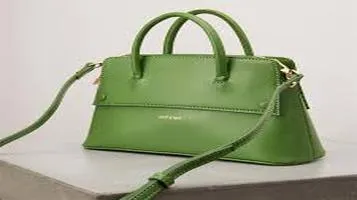A Timeless Revival: A Review of Mid-Century Modern Furniture
Mid-Century Modern furniture is a design movement that gained prominence from the mid-20th century, roughly between the 1940s and 1960s. Characterized by its sleek, functional, and minimalist aesthetic, this style emphasizes clean lines, organic curves, and a harmonious integration with nature. Materials such as wood, metal, and glass are commonly used, often combined to create visually appealing and practical pieces. Iconic designers like Charles and Ray Eames, Eero Saarinen, and Arne Jacobsen championed this movement, producing timeless pieces that continue to influence contemporary design. The emphasis on form and function reflects a post-war optimism and a desire for simplicity and innovation in home furnishings. Today, Mid-Century Modern furniture remains popular for its timeless appeal and versatility in various interior settings.

In the ever-evolving world of interior design, certain styles emerge, reign supreme for a time, and then fade into the annals of history. However, some aesthetics prove to be timeless, continually reemerging with renewed vigor and relevance. One such style that has withstood the test of time is Mid-Century Modern (MCM) furniture. With its origins tracing back to the mid-20th century, the MCM movement has, over the past few decades, seen a significant revival, captivating both designers and homeowners alike with its clean lines, functional forms, and understated elegance. As someone who has both studied and lived with Mid-Century Modern pieces for years, I can attest to its enduring appeal and versatile functionality.
A Nostalgic Yet Futuristic Design
Mid-Century Modern furniture is quintessentially characterized by its simplicity, organic forms, and emphasis on functionality. This design movement, which flourished from the mid-1940s to the late 1960s, was a natural progression from the preceding Art Deco style and a reaction to the austerity of the World War II era. The result was a design ethos that married the past with the future, combining traditional craftsmanship with new materials and technologies.
One of the most striking features of Mid-Century Modern furniture is its use of clean, geometric lines. Whether it's the sleek profile of an Eames lounge chair or the tapered legs of a Noguchi coffee table, these pieces exude a sense of order and harmony. This simplicity is not just aesthetic but also functional, as it allows the furniture to blend seamlessly with various decor styles. The minimalistic design means that each piece can stand alone as a statement or integrate effortlessly into a more eclectic ensemble.
Materials and Craftsmanship
The materials used in Mid-Century Modern furniture are another testament to its timeless appeal. Wood, particularly teak, walnut, and oak, is a staple in many MCM pieces. The natural warmth and texture of these woods provide a comforting contrast to the sleek lines and minimalist forms. Additionally, the craftsmanship involved in working with these materials is evident in the precise joinery and smooth finishes.
However, MCM is not limited to wood. The movement also embraced new materials like molded plywood, fiberglass, and plastic, which were revolutionary at the time. The Eames Molded Plastic Chair, for example, showcased how plastic could be both functional and beautiful. This innovative use of materials not only expanded the design possibilities but also made high-quality furniture more accessible to the average consumer.
Functionality Meets Aesthetic
One of the core principles of Mid-Century Modern design is the idea that form follows function. This tenet is evident in the practical yet visually pleasing nature of MCM furniture. Take, for instance, the iconic Eames Lounge Chair and Ottoman. Designed by Charles and Ray Eames in 1956, this piece is the epitome of comfort and style. Its ergonomic design provides exceptional support, while the combination of leather and molded plywood creates a luxurious yet approachable look.
Similarly, the Nelson Platform Bench, designed by George Nelson, serves multiple purposes. It can be used as a seating option, a coffee table, or even a display surface. This multifunctionality is a hallmark of MCM design, making these pieces not just beautiful but also incredibly practical.
The Modern-Day Appeal
So why has Mid-Century Modern furniture experienced such a resurgence in recent years? The answer lies in its versatility and timelessness. In an age where consumerism often leads to disposable furniture, MCM pieces stand out for their durability and lasting appeal. They are investments that can be passed down through generations, retaining both their beauty and functionality.
Moreover, the minimalist nature of MCM design resonates with contemporary tastes for simplicity and decluttered spaces. In a world increasingly dominated by technological distractions and constant stimuli, the clean lines and harmonious forms of Mid-Century Modern furniture offer a sense of calm and order.
Conclusion
Mid-Century Modern furniture is more than just a design trend; it is a testament to the enduring power of thoughtful design and quality craftsmanship. Its ability to seamlessly blend form and function, combined with its timeless aesthetic, ensures that it remains relevant in both historical and contemporary contexts. Whether you are a seasoned collector or a newcomer to this style, investing in Mid-Century Modern pieces is a decision that promises both immediate satisfaction and long-term value. In a world where so much is transient, the lasting appeal of Mid-Century Modern furniture is a comforting constant.






